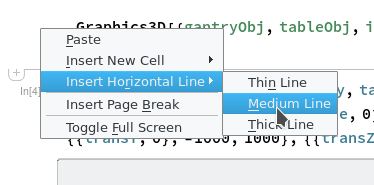Hi Yode,
you can create such a blue line inside notebooks simply by placing you mouse over a "new line" (when you see that + at the beginning), and then by making a right click:

I regard this as a nice feature and use it quite often. I have no idea about those gray lines ...
Regards -- Henrik